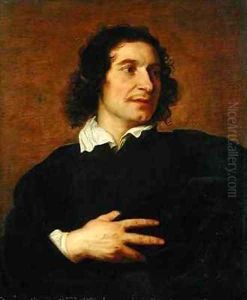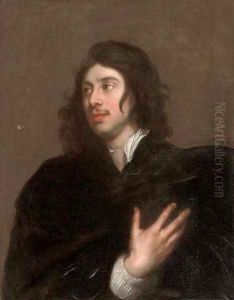Lucas the Younger Franchoys Paintings
Lucas Franchoys the Younger was a Flemish Baroque painter who was born in Mechelen in the Southern Netherlands (present-day Belgium) in 1616. He was the son of Lucas Franchoys the Elder, who was also a painter, and he was the younger brother of Peter Franchoys, another artist in the family. Lucas the Younger is known for his portraits and religious paintings, which were very much in demand during his lifetime.
Franchoys received his initial training from his father and later studied under the prominent painter Peter Paul Rubens. His early works are typically Baroque in style and demonstrate a strong influence from Rubens. Franchoys was skilled in capturing the emotional character of his subjects, which is evident in his various portraits. Despite the strong influence of Rubens, Lucas managed to develop a personal style that was softer and more focused on the fine rendering of details and fabrics.
In the 1630s, Lucas Franchoys the Younger left for Paris, where he became influenced by the work of Simon Vouet. The French artist's style left a mark on Franchoys' approach to painting, contributing to his development as an artist. After his stint in Paris, Lucas returned to Mechelen, where he worked for the rest of his life. His career was successful, and he received numerous commissions for religious works, portraits, and altarpieces, which were well received by the local churches and the citizens of Mechelen.
Franchoys' work was characterized by a refined elegance and a clarity of composition. His portraits often depicted the sitters with a calm and reserved demeanor, set against a neutral background that focused attention on the figure. In his religious paintings, he displayed a profound sense of narrative and was able to convey the spiritual aspect of the scenes he depicted.
Lucas Franchoys the Younger died in 1681 in Mechelen. His legacy includes a significant contribution to Flemish painting of the 17th century, and his works can be found in various museums and collections in Belgium and across the world. Although not as widely known as some of his contemporaries, his paintings are appreciated for their technical skill, emotional depth, and the insight they provide into the society of his time.

